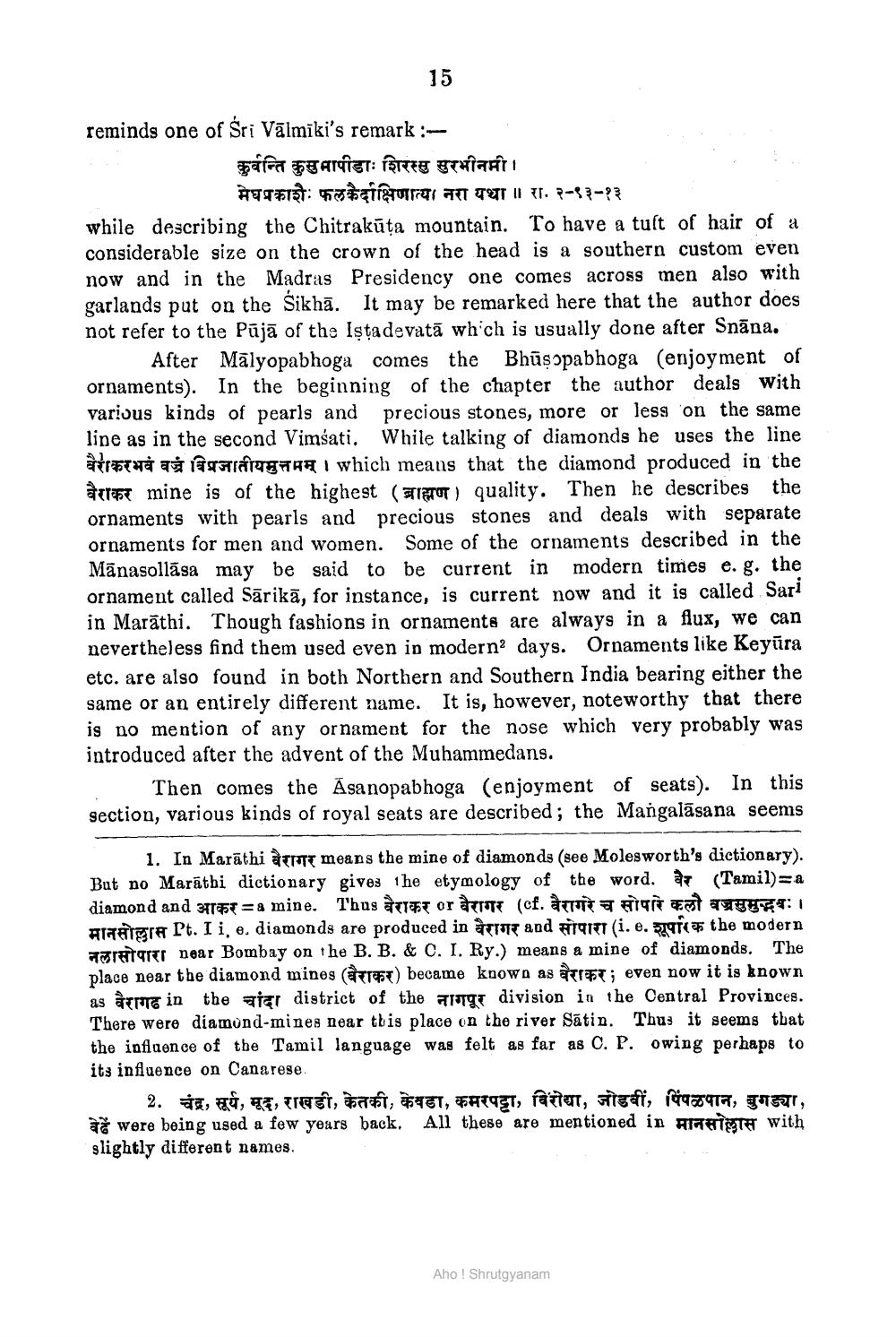________________
15
reminds one of Sri Vālmīki's remark :
कुर्वन्ति कुसुमापीडाः शिरस्सु सुरभीनमी।
मेघप्रकाशैः फलकैर्दाक्षिणात्या नरा यथा ॥ रा. २-९३-१३ while describing the Chitrakūta mountain. To have a tust of hair of a considerable size on the crown of the head is a southern custom even now and in the Madras Presidency one comes across men also with garlands put on the Sikhā. It may be remarked here that the author does not refer to the Pūjā of the Istadevatā which is usually done after Snāna.
After Mālyopabhoga comes the Bhūsupabhoga (enjoyment of ornaments). In the beginning of the chapter the author deals with various kinds of pearls and precious stones, more or less on the same line as in the second Vimsati. While talking of diamonds he uses the line वैराकरभवं वज्रं विप्रजातीयमुत्तमम् । which means that the diamond produced in the a t mine is of the highest (TTT) quality. Then he describes the ornaments with pearls and precious stones and deals with separate ornaments for men and women. Some of the ornaments described in the Mānasollāsa may be said to be current in modern times e. g. the ornament called Sārikā, for instance, is current now and it is called Sari in Marāthi. Though fashions in ornaments are always in a flux, we can nevertheless find them used even in modern days. Ornaments like Keyūra etc. are also found in both Northern and Southern India bearing either the same or an entirely different name. It is, however, noteworthy that there is no mention of any ornament for the nose which very probably was introduced after the advent of the Muhammedans.
Then comes the Asanopabhoga (enjoyment of seats). In this section, various kinds of royal seats are described; the Mangalāsana seems
1. In Marāthi à Tit means the mine of diamonds (see Molesworth's dictionary). But no Marathi dictionary gives the etymology of the word.(Tamil)=a diamond and आकर=a mine. Thus बैराकर or वैरागर (of. वैरागरे च सोपारे कलो वज्रसुमुद्भवः । मानसोल्लास Pt. I i.e. diamonds are produced in वैरागर and सोपारा (i.e.शुपरिक the modern Fratari near Bombay on the B. B. & C. I. Ry.) means a mine of diamonds. The place near the diamond mines (Trør) became known as arret; even now it is known as are in the pier district of the altar division in the Central Provinces. There were diamùnd-mines near this place on the river Sātin. Thus it seems that the influence of the Tamil language was felt as far as C. P. owing perhaps to its influence on Canarese
2. , , , Tract, T, TTT, FATIGT, rafin, piedi, 9A, TETI, ag were being used a few years back. All these are mentioned in Amhigh with slightly different names.
Aho! Shrutgyanam




